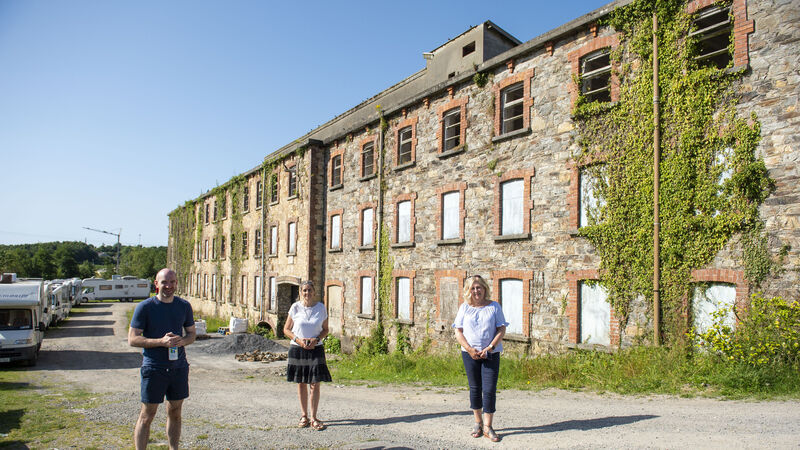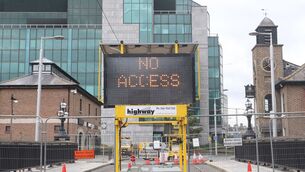Incentives may bring 40k houses into use

Paddy Mulhearne, Laura Kirwan and Susan Veale of the Social Enterprise Group stand next to the derelict Wollen Mills building just off Main Street, Kilmacthomas, Co Waterford. Picture Dan Linehan
At least 40,000 vacant houses could easily be brought back into use if the Government comes up with substantial financial incentives.
That's the view of architect Mel Reynolds who estimates that there are now 137,000 vacant houses around the country.
Mr Reynolds, who is due before the Oireachtas Housing Committee today, will state that government policy to date has concentrated on new builds with limited results.
"The increase in supply of new housing has not been aimed at households, and there are still significant landbanks underutilised, much of which is state-owned or controlled. In addition to this there are extensive amounts of existing building stock, both residential and commercial, that could be brought back into use in a relatively short timescale," Mr Reynolds will tell the committee.
He will point to 2016 figures from the Central Statistics Office (CSO) which put the number of vacant properties at 183,312, or 9.1% of housing stock, when holiday homes were excluded.
This figures also excluded over-the-shop units and existing vacant commercial space in towns and cities, which the Government is now targeting with a number of planned initiatives. However, the number of vacant properties in 2016 had fallen by 46,736 when compared to statistics from 2011.
"Assuming this vacancy rate reduction continues at a similar pace from 2016-2022, the number of vacant dwellings in census 2022 could be in the region of 137,000, a 6.5% vacancy rate," Mr Reynolds is expected to say.
"This would suggest 40,000 existing dwellings could be brought back into stock in coming years if the correct initiatives were employed."
Maria Graham, Assistant Secretary in the planning division of the Department of Housing, will stress that there is a firm commitment to tackling vacancy and dereliction but will say it is important that the State "de-risks" projects for property owners.
While the provision of funding and clarity of regulation is important in tackling vacancy, she will say there are challenges.
"It is often riskier, involving more time, to refurbish than to build a new property. Furthermore, while it can appear more expensive to the individual than greenfield development, the costs of dereliction and vacancy in our cities, towns and villages are very high in societal terms.
"There is an important role for the State in seeking to de-risk many of these projects, to provide vision for towns, support pathfinder projects and provide encouragement and a one-stop-shop approach to guide people through the development process," she will tell the Committee in her opening statement.
Giulia Vallone, a senior architect with Cork County Council, will tell the committee that families need to be convinced of the benefits of choosing a town centre property rather than a semi-detached suburban house.
However, she will state that Ireland’s town centres do not have enough stock to be readily renovated at a scale to impact meaningfully on the housing crisis, so high-quality compact new development, such as large apartment blocks, must also be delivered in the centres.
She will also argue that local authorities should have architects employed specifically to deliver high-quality compact growth in historical towns.











